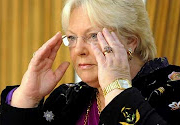Dutch doctors turn to ‘continuous deep sedation’ to keep official euthanasia figures low

The Lancet has just published an article purporting to show that euthanasia rates have not increased in the Netherlands since legalisation in 2002.
This news will probably be seized upon by enthusiasts for decriminalisation in the UK and elsewhere but the figures are not at all what they seem at first sight and the press release sent out by the journal is selective and misleading in its reporting of the facts.
If you read the press release sent by the Lancet (reproduced by Medical Xpress) it all seems cut and dried. There were about 4,050 cases of euthanasia or assisted suicide in 2010 (2.8% of all deaths) and this was only slightly up from the 2001 figure of 3,800 (2.6%).
But if you read the abstract along with the full article and accompanying comment you get a very different picture altogether.
Most news outlets will do neither but will simply propagate the press release which is why it is important to look at the original sources.
Thus far, the Daily Telegraph is the only national newspaper to cover the story.
The key fact which should alert people to something odd going on is the reference to ‘continuous deep sedation’ in the Netherlands which appears in the article’s abstract but tellingly (and perhaps even disingenuously) not in the Lancet press release.
The abstract states, ‘Continuous deep sedation until death occurred more frequently in 2010 (12.3% [11.6—13.1; 789 of 6861]) than in 2005 (8.2% [7.8—8.6; 521 of 9965]).’
But what was the rate of ‘continuous deep sedation until death’ in 2001 and previously?
On examining the article we learn from table 1 that it was not measured in 1990 and 1995 and was 5.6% in 2001. In other words there has been a steady increase in this category of cases which in 2010 accounted for 16,700 deaths.
Over the same period the number of deaths after ‘intensified alleviation of symptoms’ has also increased from 20.1% to 36.4% and now accounts for over 49,500 deaths annually.
There is nothing new about any of these figures. They have all been published in reviews of Netherlands practice before in peer-reviewed medical journals (in total five studies covering 1990, 1995, 2001, 2005 and 2010).
But the accompanying comment piece in the Lancet by Brendan Lo raises some very interesting questions indeed.
It acknowledges that the line between euthanasia and ‘the less controversial, much more common practice’ of ‘continuous deep sedation’ ‘can be blurred in clinical practice’ and noted that in other studies ‘physicians also misclassify some cases of euthanasia’.
In other words, it says, ‘physicians who say they are undertaking palliative sedation sometimes cross the line to euthanasia’.
Whilst the paper claims that the level of involuntary euthanasia has decreased since 1991 from 0.7% to 0.2% of all deaths (ie. deliberate killing with lethal drugs without consent), it also acknowledges that ‘in 42% of cases classified by the investigators as intensified alleviation of symptoms, the physician did not discuss the decision with the patient, relatives or another physician’.
The Lancet comment concludes by saying that ‘an in-depth analysis of these cases might reveal more widespread conceptual confusions or flaws in practice’ and recommends that ‘additional information from in-depth interviews in ethically problematic cases is needed’.
In other words it is not at all clear how many of these two categories of ‘continuous deep sedation’ and ‘intensified alleviation of symptoms’ involved the explicit intention to end life.
But the huge increase in number of patients dying in each of these categories since legalisation in 2002 is very suspicious indeed.
It appears that Dutch doctors have kept the euthanasia figures low simply by choosing to end patients’ lives in ways other than administering paralysing drugs (muscle relaxants) or barbiturates.
In other words they are making more decisions to end life than before legalisation but are just carrying it out and recording it differently.
The practice of ‘continuous deep sedation’ has been questioned before. A 2010 Mayo Clinic article drew the following stark conclusions:
‘Published literature has not discerned end-of-life palliative versus life-shortening effects of pharmacologically maintaining continuous deep sedation until death (i.e., dying in deep sleep) compared with common sedation practices relieving distress in the final conscious phase of dying. Continuous deep sedation predictably suppresses brainstem vital centers and shortens life. Continuous deep sedation remains controversial as palliation for existential suffering and in elective death requests by discontinuation of chronic ventilation or circulatory support with mechanical devices. Continuous deep sedation contravenes the double-effect principle because: (1) it induces permanent coma (intent of action) for the contingency relief of suffering and for social isolation (desired outcomes) and (2) because of its predictable and proportional life-shortening effect. Continuous deep sedation should be distinguished from common sedation practices for palliation and characterized instead as physician-assisted death.’
Other authors have proposed the term ‘early terminal sedation’ for the particularly contentious practice of giving deep, continuous sedation to patients who are not imminently dying without provision of hydration or nutrition, with the end result that death is hastened. This is in reality a form of euthanasia and seems to be increasingly common in the Netherlands despite not being labelled as such.
The UK should take warning. At present it appears that palliative sedation as practised in the UK, which is aimed primarily at reducing anxiety at the end of life, is very different from that practised in the Netherlands, which seems to be aimed at producing deep sedation and shortening life.
But the Dutch figures seem to reveal incremental extension after legalisation which is being carefully and skilfully disguised by the way the figures are being presented.
The Lancet report, far from providing reassurance, actually raises more questions than it gives answers and it is very difficult indeed to extract the substance from the spin.
The lesson is clear. Don’t rely on the Lancet’s specious press release or superficial reports in newspapers and medical magazines. Read the original paper and ask serious questions!












Leave a Reply
Want to join the discussion?Feel free to contribute!